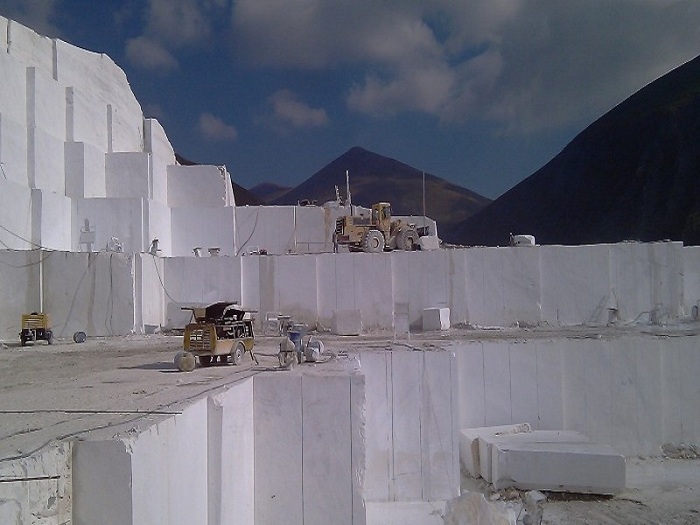Forty-five percent of decorative stone mines are inactive

Official statistics on decorative and building stone mines indicate that more than forty-five percent of such mines are inactive, which are now on the agenda.
According to the International Exhibition of Iranian Stone, based on the statistical tables published by the Ministry of Industry, Mines and Trade and the Statistics Center of Iran, the number of decorative and construction stone mines licensed in the country, two thousand and seventy-two mines have been registered and Fifty-two percent of these mines are decorative and active stone mines with 1,810 mines.
Today, Iran uses one percent of its mineral reserves, while according to international standards, this amount should be about five percent.
Previous statistics show that the amount of identified reserves in our country is about sixty billion tons, of which about forty billion tons are definite reserves and the rest are possible.
Production capacity of thirty million tons
According to the official statistics of the Ministry of Industry, the annual production capacity of decorative and building stones in the country is over thirty million tons, which was produced in 1397 at the rate of thirteen and a half million tons and was among the top five countries in the world.
The annual production capacity of processed (processed) stone is one hundred and eighty million square meters and the production is about eighty to eighty-five million square meters.
Exports value over $ 300 million
The Ministry of Industry has not yet provided official statistics on the value of exports of decorative and building stones last year, but in 1397 amounted to five hundred and eighty-one thousand tons of processed stone worth one hundred and forty-four million dollars and one million tons of coop (half Processing (worth one hundred and sixty-one million dollars) went to the respective destinations.
Iraq and the UAE were among the more than 60 countries applying for Iranian processed stone in 1397, and in the semi-processed stone sector, China attracted more than 80% of Iran's exports in this field, and India, UAE and Italy. Other markets were the Islamic Republic.
Isfahan with a share of 30% of production
Khodadad Gharibpour, Deputy Minister of Industry, Mines and Trade, said: "Because Isfahan is responsible for 30% of the products of the decorative stone industry, it will be a pilot for the development and prosperity of production and export of this industry."
He added yesterday at a video conference meeting on the study and elimination of export barriers in the decorative stone industry with the presence of representatives of Isfahan Chamber of Commerce and Imidro's foreign office managers: "This organization has a facilitating and supportive role in the process and to remove barriers, especially in the export sector." Institutions such as the Central Bank and the Ministry of Industry, Mines and Trade are consulting.
According to Imidro's public relations report, Gharibpour added: "Some of the booths in Naghsh Jahan Square in Isfahan are also considered to provide quality products for the stone industry."
"According to statistics, there are now more than nine hundred inactive mines in this area that need to be rehabilitated and activated, and Imidro facilitates the production and export of this type of mine as part of the Small Mines Activation Project," he said. Give.
He called the role of the production and production company in reviving decorative stone mines important and added: "In the export sector, foreign companies affiliated with this organization can cooperate in marketing and developing the export of decorative stones, and four countries can facilitate exports." These stones will provide.
According to this report, the Eleventh Government implemented the development of mineral exploration from its key programs, which was in an area of two hundred and seventy thousand kilometers, and for 1397, the exploration of one hundred thousand square kilometers and last year with an area of three hundred and thirty Ten thousand kilometers were planned.
According to the Iranian Organization for the Development and Development of Mines and Mining Industries (Imidro), the development of exploration activities has identified new reserves of forty-two tons of gold, twenty-two million tons of bauxite, one hundred and three million tons of barite, thirty thousand tons of antimony, sixty-five. One thousand tons of rare earth elements, three hundred and forty-five million tons of coking coal, two hundred million tons of thermal coal, five hundred million tons of iron ore.
* IRNA










